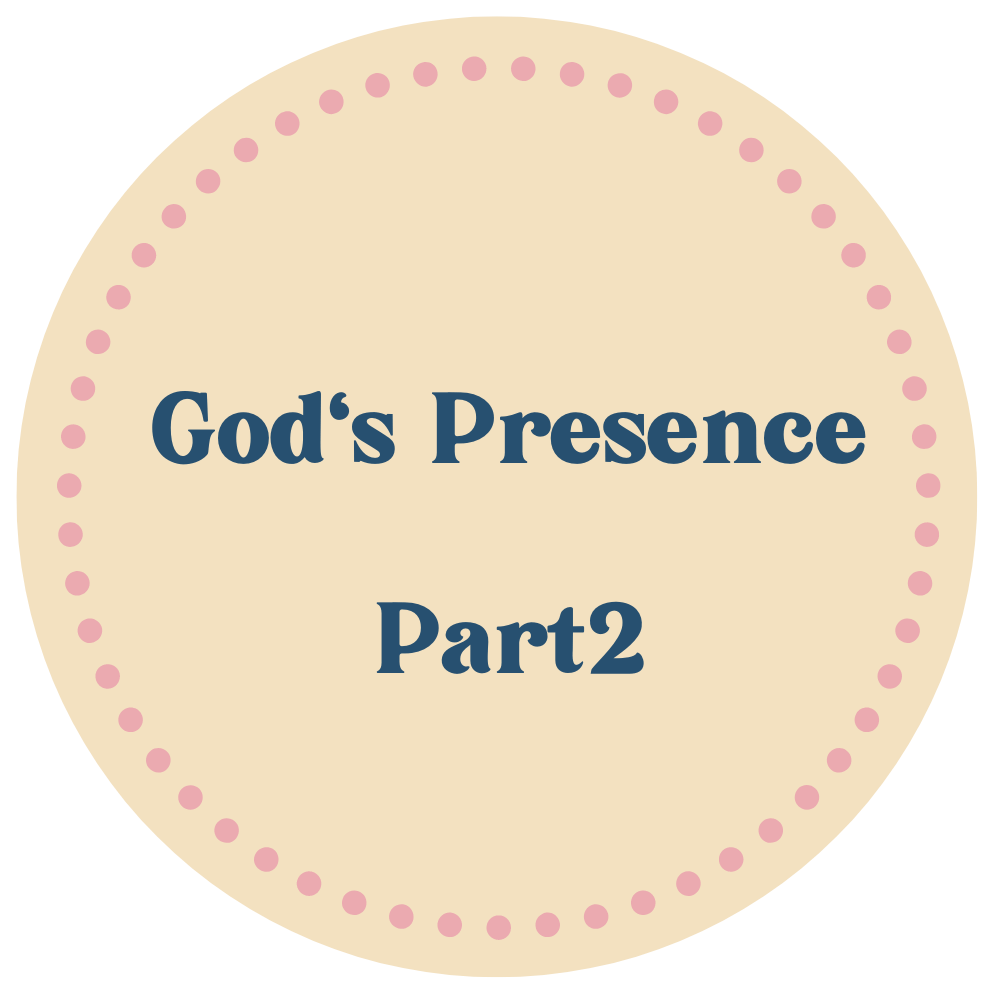How to Feel God’s Presence: Part 1

Is God’s Presence something we can experience in our everyday lives?
Over the years of discipling Christian women, a common question I have received has been: “Gina, I want to read and enjoy God’s Word, but God isn’t physically sitting here with me. I don’t feel His presence when I can not see Him.”
This concern can be a difficult question to overcome, and so as we begin 2023, I would like to offer you a challenge and some encouragement that will help you throughout this year in those moments when you feel God is far away.
Biblical Theology will guide us as we move from the Old Testament to the New Testament, painting a picture of God’s presence. For it is by looking at the past that we can see God’s presence experienced in tangible ways. So, instead of looking for a sign or waiting for a feeling, let’s see how the Bible presents God’s presence in the everyday lives of His people through the discipline of biblical theology.
Sign up below to get your FREE Bible Study Jump-Start
God’s Presence: Old Testament
Genesis
In the Old Testament, God’s Presence was observed in various ways, but first, in the perfect fellowship with Adam and Eve in the Garden of Eden (Genesis 2:15–18, 3:8). Sadly, we see that this fellowship was broken shortly after it was established in Genesis 3 through the consequences of the Fall.
But God, in His mercy, didn’t leave Adam and Eve without a promise of fully and finally restoring His fellowship and presence with them. Through the future of the coming of His chosen Messiah, mankind would be redeemed and reestablished in perfect fellowship with Him Genesis 3:15.
The promise of the coming Messiah is carried throughout the book of Genesis, where God begins His restoration plan by speaking directly to a chosen person. That person began with Abraham.
Now, you might be thinking, but Gina, you forgot about Noah, Enoch, Cain, Abel, and maybe even Job! Of course, these men were of great importance; however, the promise of the coming Messiah didn’t start with them but with Abraham Genesis 12–17. The promise continues through the book of Genesis to Abraham’s great, great grandson Joseph.
These men, also known as the patriarchs, would have been known by the people of Israel as men who “walked with God.” Joseph was instrumental in leading God’s people (Israel) into the land of Egypt, where God would reveal His next step in restoring fellowship and His presence with the people in the book of Exodus.
Exodus
The three ways God’s people would know His presence were:
- The tent of the meeting, also known as the Tabernacle
- The shining face of Moses
- The pillar of cloud and pillar of fire
The Tent of Meeting and later the Tabernacle was where God met first with Moses and then later through the Leviticus priesthood, the High Priest, once a year. Exodus 33:7,9 and chapter 40.
Alongside Moses’s interactions with God through the tent of meeting, a pillar of cloud would sign to the people that God was present. Both the pillar of cloud and the pillar of fire would be a sign of God’s presence and His leading in the wilderness.
Thirdly, Moses’s shining face would have represented to the people His glory and the glory of the Old Covenant. Yet, even though God had provided a way for His people to dwell with Him and provided them with a tangible reminder of His presence, they refused to be satisfied.
Exodus 32:1–6
When we look at this chapter, often our first thoughts are that of idolatry. The worship of the golden calf is an example of idolatry but can be very difficult to connect with since our modern culture, as a majority, doesn’t bow down to statues. The third of the Ten Commandments is clear: “You shall not make for yourself an image in the form of anything in heaven above or on the earth beneath or in the waters below.” Exodus 20:1, so we first see this example as breaking this command.
A second consideration is a phrase in Exodus 32: 1. When the people saw that Moses had taken so long to come down from the mountain, they gathered around Aaron and said, “Come, make us gods who will go before us.” As for this fellow Moses who brought us up out of Egypt, we don’t know what has happened to him.
What did the people mean by this? Let’s think briefly by looking at the phrase, “Come, make us gods who will go before us.” The people were not just looking for an object of worship but also something representing God’s physical—a god who will go before us.
As mentioned above, Israel identified Moses as their mediator between man and God. But, in their impatience, they wanted something tangible. They wanted God to identify with them according to their desires and demands.
Now you might be thinking, “Gina, isn’t that a little harsh to refer to the people of Israel’s desires as “personal desires and demands”? Unfortunately, the answer is no, and here’s why.
First, God spoke to the people in Exodus 20:22–23, 22 Then the Lord said to Moses, “Tell the Israelites this: ‘You have seen for yourselves that I have spoken to you from heaven: 23 Do not make any gods to be alongside me; do not make for yourselves gods of silver or gods of gold.
Even though the covenant that would include their obedience to the Ten Commandments hadn’t been consecrated, God specifically instructed them to understand that He was the true God. No god or image of silver or gold could compete with Him. Instead, God required their total devotion, hearts, minds, and souls to worship Him alone.

Conclusion
What does this mean for us?
So, how can we relate? As I mentioned when we began this series, it can be challenging to feel close to God when we can’t see Him. Israel was given three tangible ways in which God showed His presence and communed with them in fellowship. In the Exodus, God was speaking, and now He has spoken. He has given us two tangible ways to see His presence daily. Let’s now turn to the New Testament, where we will discover these two ways!


